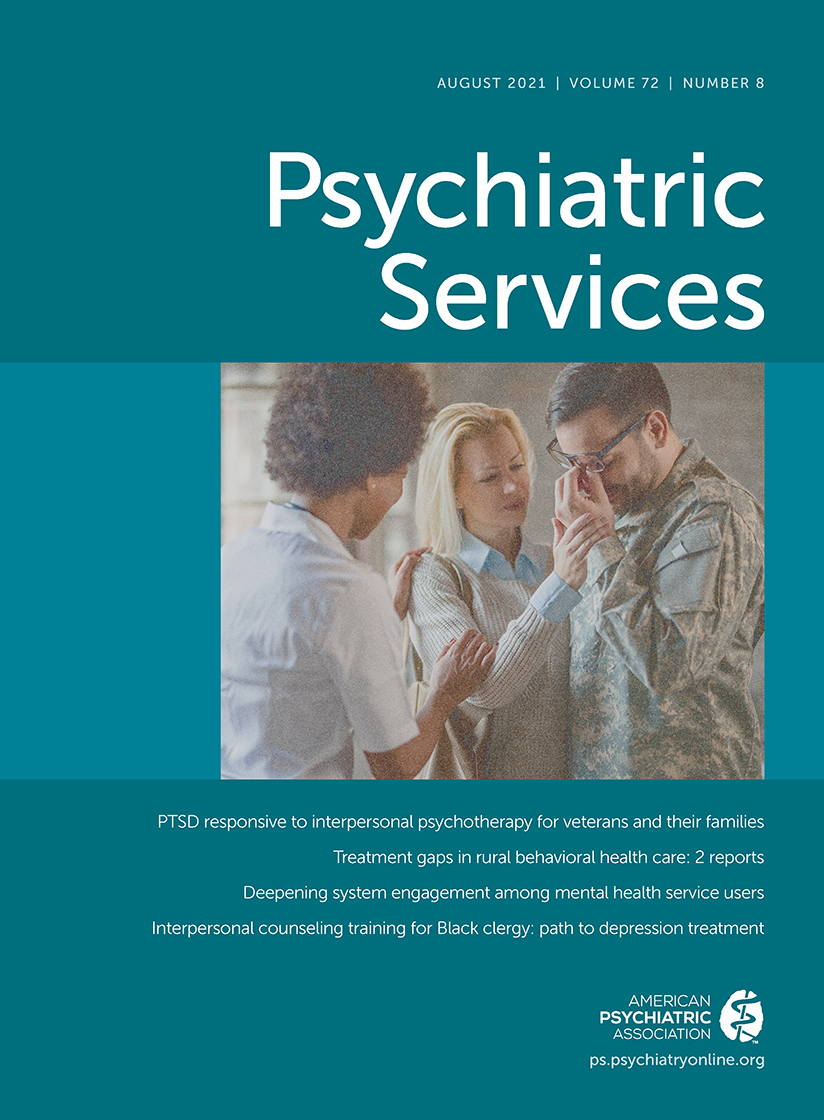A Clinical Decision Support System to Prevent Aggression and Reduce Restrictive Practices in a Forensic Mental Health Service
Abstract
Objective:
Methods:
Results:
Conclusions:
HIGHLIGHTS
Dynamic Appraisal of Situational Aggression
Clinical Decision Support Systems and the eDASA+APP
Methods
Setting
Participants
Research Design
Outcome Measures
Instrument Components
Adapted Overt Aggression Scale.
DASA.
eDASA+APP.
Study Phases
Baseline (months 1 and 2).
Staff training.
Intervention phase 1 (months 3 and 4).
Washout period (months 5 and 6).
Intervention phase 2 (months 7 and 8).
Data Analyses
Multilevel analysis.
Baseline analysis.
Intervention analysis.
Results
Baseline Comparison of Units
| Characteristic | N | % |
|---|---|---|
| Age (M±SD) | 39.6±10.9 | |
| No. of patients | 77 | 100 |
| Total occupied-bed days | 5,724 | 100 |
| Unit 1 | 2,994 | |
| Unit 2 | 2,730 | |
| Male gender | 77 | 100 |
| DSM-5 diagnosisa | ||
| Delusional disorder | 4 | 5 |
| Bipolar disorder | 2 | 3 |
| Schizophrenia | 55 | 71 |
| Schizoaffective disorder | 11 | 14 |
| Personality disorder | 12 | 15 |
| Unspecified or drug-induced psychosis | 12 | 15 |
Effects of eDASA+APP on Aggression
| Variable | OR | 95% CI | t | p |
|---|---|---|---|---|
| Verbal toward any target | .56 | .44–.70 | –5.1 | <.001 |
| Verbal toward staff | .51 | .40–.65 | –5.7 | <.001 |
| Verbal toward patients | .51 | .44–.60 | –9.7 | <.001 |
| All forms together | .56 | .45–.70 | –5.0 | <.001 |
| Condition | ||||||||||
|---|---|---|---|---|---|---|---|---|---|---|
| Baseline | eDASA+APP | |||||||||
| Characteristic | Mb | SD | Maxc | Nd | OBD | Mb | SD | Maxc | Nd | OBD |
| Incidents of physical aggression | 82 | 17 | ||||||||
| Unit 1 | .077 | .298 | 2 | 60 | 784 | .011 | .106 | 1 | 8 | 707 |
| Unit 2 | .032 | .191 | 2 | 22 | 696 | .014 | .116 | 1 | 9 | 664 |
| Incidents of verbal aggression | 222 | 58 | ||||||||
| Unit 1 | .153 | .419 | 2 | 120 | 784 | .024 | .162 | 2 | 17 | 707 |
| Unit 2 | .147 | .385 | 2 | 102 | 696 | .062 | .259 | 2 | 41 | 664 |
| All incidents | 304 | 75 | ||||||||
| Unit 1 | .230 | .624 | 4 | 180 | 784 | .035 | .213 | 2 | 25 | 707 |
| Unit 2 | .178 | .489 | 3 | 124 | 696 | .075 | .306 | 2 | 50 | 664 |
Effects of eDASA+APP on Nursing Interventions
| Variable | OR | 95% CI | t | df | p |
|---|---|---|---|---|---|
| One-to-one nursing | 2.61 | 1.98–3.45 | 6.9 | 75 | <.001 |
| Reassurance | 4.05 | 3.09–5.29 | 10.4 | 75 | <.001 |
| Distraction | 3.41 | 2.64–4.42 | 9.5 | 75 | <.001 |
| Deescalation | 1.50 | 1.22–1.83 | 4.0 | 75 | <.001 |
| PRN medication | .64 | .50–.83 | 3.6 | 75 | <.001 |
| Limit setting | 1.37 | 1.23–1.83 | 2.7 | 75 | .010 |
Seclusion
Uptake of eDASA and eDASA+APP
Discussion
Study Limitations
Practical Implications and Future Research
Conclusions
Supplementary Material
- View/Download
- 58.15 KB
References
Information & Authors
Information
Published In
History
Keywords
Authors
Competing Interests
Metrics & Citations
Metrics
Citations
Export Citations
If you have the appropriate software installed, you can download article citation data to the citation manager of your choice. Simply select your manager software from the list below and click Download.
For more information or tips please see 'Downloading to a citation manager' in the Help menu.
View Options
View options
PDF/EPUB
View PDF/EPUBLogin options
Already a subscriber? Access your subscription through your login credentials or your institution for full access to this article.
Personal login Institutional Login Open Athens loginNot a subscriber?
PsychiatryOnline subscription options offer access to the DSM-5-TR® library, books, journals, CME, and patient resources. This all-in-one virtual library provides psychiatrists and mental health professionals with key resources for diagnosis, treatment, research, and professional development.
Need more help? PsychiatryOnline Customer Service may be reached by emailing PsychiatryOnline@psych.org or by calling 800-368-5777 (in the U.S.) or 703-907-7322 (outside the U.S.).

